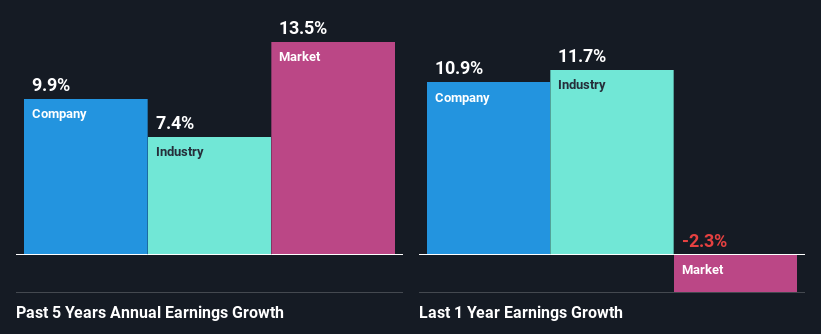Are Robust Financials Driving The Recent Rally In Snap-on Incorporated's (NYSE:SNA) Stock?
Snap-on (NYSE:SNA) has had a great run on the share market with its stock up by a significant 9.3% over the last month. Given that the market rewards strong financials in the long-term, we wonder if that is the case in this instance. In this article, we decided to focus on Snap-on's ROE.
Return on equity or ROE is an important factor to be considered by a shareholder because it tells them how effectively their capital is being reinvested. In simpler terms, it measures the profitability of a company in relation to shareholder's equity.
View our latest analysis for Snap-on
How Is ROE Calculated?
The formula for ROE is:
Return on Equity = Net Profit (from continuing operations) ÷ Shareholders' Equity
So, based on the above formula, the ROE for Snap-on is:
20% = US$1.0b ÷ US$5.1b (Based on the trailing twelve months to December 2023).
The 'return' is the yearly profit. So, this means that for every $1 of its shareholder's investments, the company generates a profit of $0.20.
What Has ROE Got To Do With Earnings Growth?
We have already established that ROE serves as an efficient profit-generating gauge for a company's future earnings. We now need to evaluate how much profit the company reinvests or "retains" for future growth which then gives us an idea about the growth potential of the company. Generally speaking, other things being equal, firms with a high return on equity and profit retention, have a higher growth rate than firms that don’t share these attributes.
A Side By Side comparison of Snap-on's Earnings Growth And 20% ROE
At first glance, Snap-on seems to have a decent ROE. Further, the company's ROE compares quite favorably to the industry average of 12%. Probably as a result of this, Snap-on was able to see a decent growth of 9.9% over the last five years.
As a next step, we compared Snap-on's net income growth with the industry, and pleasingly, we found that the growth seen by the company is higher than the average industry growth of 7.4%.
Earnings growth is an important metric to consider when valuing a stock. What investors need to determine next is if the expected earnings growth, or the lack of it, is already built into the share price. Doing so will help them establish if the stock's future looks promising or ominous. Is SNA fairly valued? This infographic on the company's intrinsic value has everything you need to know.
Is Snap-on Using Its Retained Earnings Effectively?
With a three-year median payout ratio of 34% (implying that the company retains 66% of its profits), it seems that Snap-on is reinvesting efficiently in a way that it sees respectable amount growth in its earnings and pays a dividend that's well covered.
Additionally, Snap-on has paid dividends over a period of at least ten years which means that the company is pretty serious about sharing its profits with shareholders. Our latest analyst data shows that the future payout ratio of the company over the next three years is expected to be approximately 38%. As a result, Snap-on's ROE is not expected to change by much either, which we inferred from the analyst estimate of 19% for future ROE.
Conclusion
In total, we are pretty happy with Snap-on's performance. Specifically, we like that the company is reinvesting a huge chunk of its profits at a high rate of return. This of course has caused the company to see substantial growth in its earnings. Having said that, the company's earnings growth is expected to slow down, as forecasted in the current analyst estimates. To know more about the latest analysts predictions for the company, check out this visualization of analyst forecasts for the company.
Have feedback on this article? Concerned about the content? Get in touch with us directly. Alternatively, email editorial-team (at) simplywallst.com.
This article by Simply Wall St is general in nature. We provide commentary based on historical data and analyst forecasts only using an unbiased methodology and our articles are not intended to be financial advice. It does not constitute a recommendation to buy or sell any stock, and does not take account of your objectives, or your financial situation. We aim to bring you long-term focused analysis driven by fundamental data. Note that our analysis may not factor in the latest price-sensitive company announcements or qualitative material. Simply Wall St has no position in any stocks mentioned.

